Ustad Ilyas Khan’s HR sitar restoration – Pt2
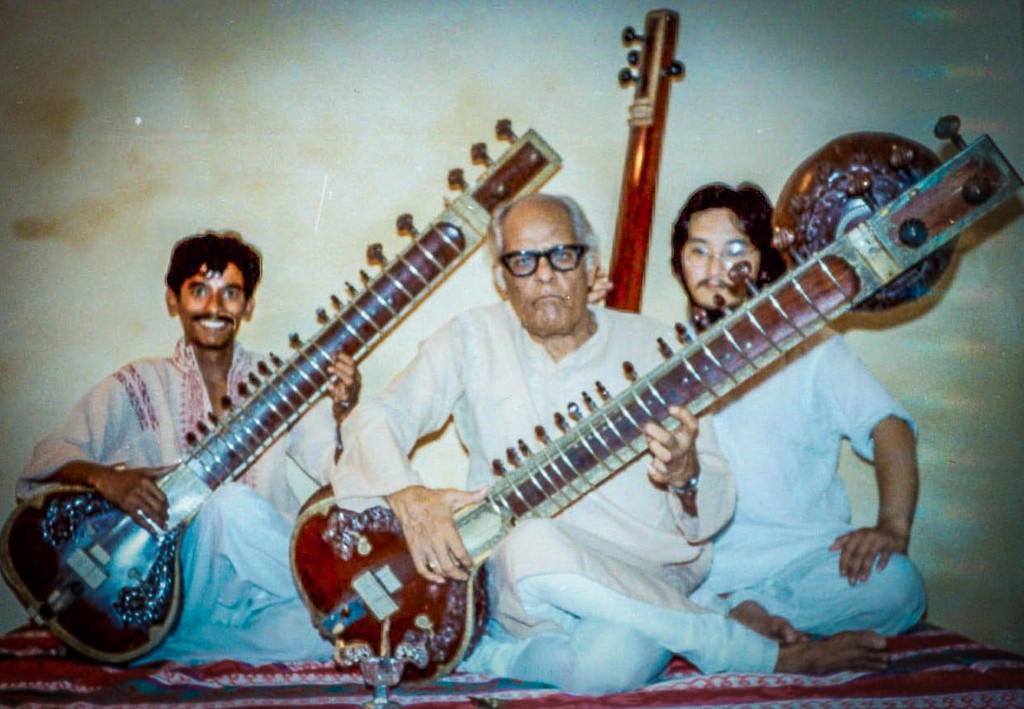 Foto from left to right: Idris Khan – sitar, Ustad Ilyas Khan – sitar, Tadahiro Wakabayashi – tanpura.
Foto from left to right: Idris Khan – sitar, Ustad Ilyas Khan – sitar, Tadahiro Wakabayashi – tanpura.
Foto © T. Wakabayashi
This is the follow-up report to a project on the restoration of a special Hiren Roy sitar. Click here for the first part. Below is the second part concerning the result:
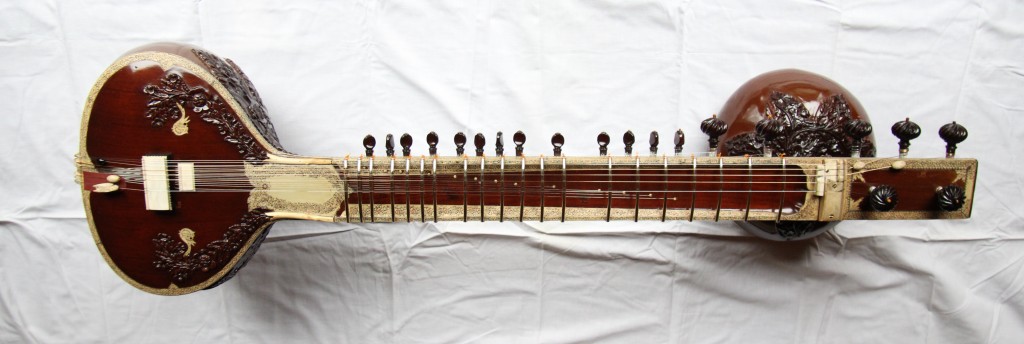 The original second tumba is missing. This is very unfortunate for a sitar that is around 60 years old. It is easy to see from the photos that this is a fairly large second tumba. Not surprising for sitar of this class. I myself do not have any tumbas in stock, nor can I make them just like that. But for some time now, I have been working regularly with Mohammad Waseem Maner, a young and talented sitar maker from Miraj. I asked him if he could then make a replica of this missing second tumba for us. “Yes. Sir I will do the needful” was his prompt reply and so it happened.
The original second tumba is missing. This is very unfortunate for a sitar that is around 60 years old. It is easy to see from the photos that this is a fairly large second tumba. Not surprising for sitar of this class. I myself do not have any tumbas in stock, nor can I make them just like that. But for some time now, I have been working regularly with Mohammad Waseem Maner, a young and talented sitar maker from Miraj. I asked him if he could then make a replica of this missing second tumba for us. “Yes. Sir I will do the needful” was his prompt reply and so it happened.
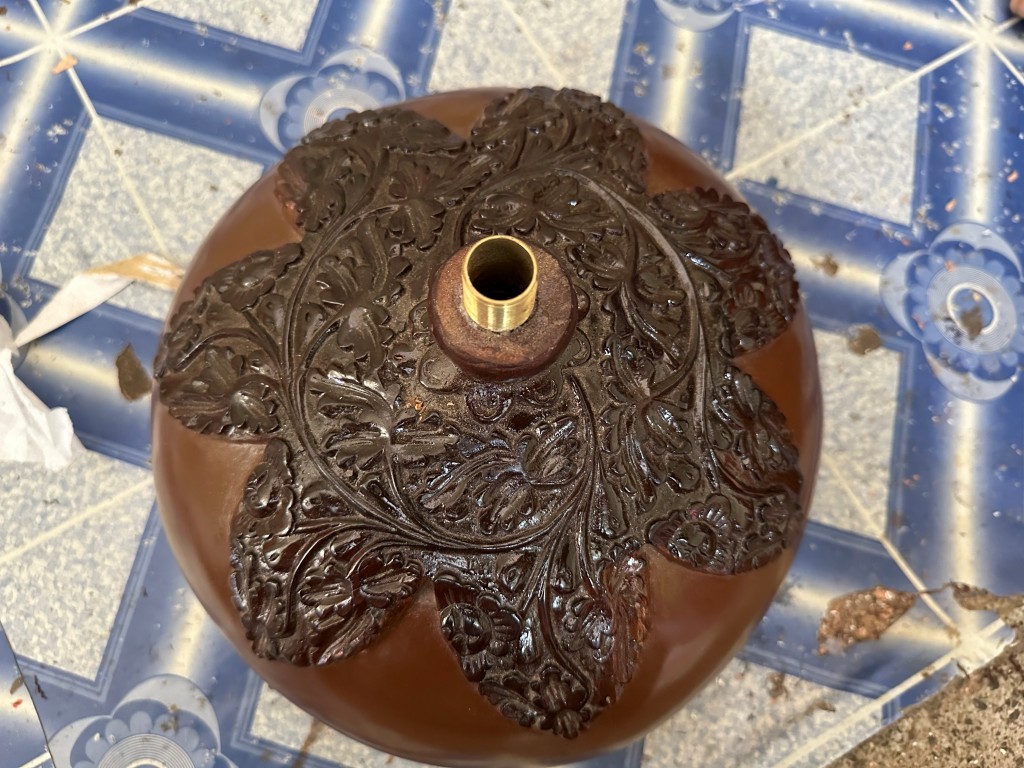
The new second tumba arrived just in time to still be mounted on the fully repaired instrument. And, Waseem did a sterling job. The cut-outs in the woodwork match those of the original perfectly.
Following are some photos of the finished instrument.
Time to dwell for a moment on the unusual bridge on the head of the neck.
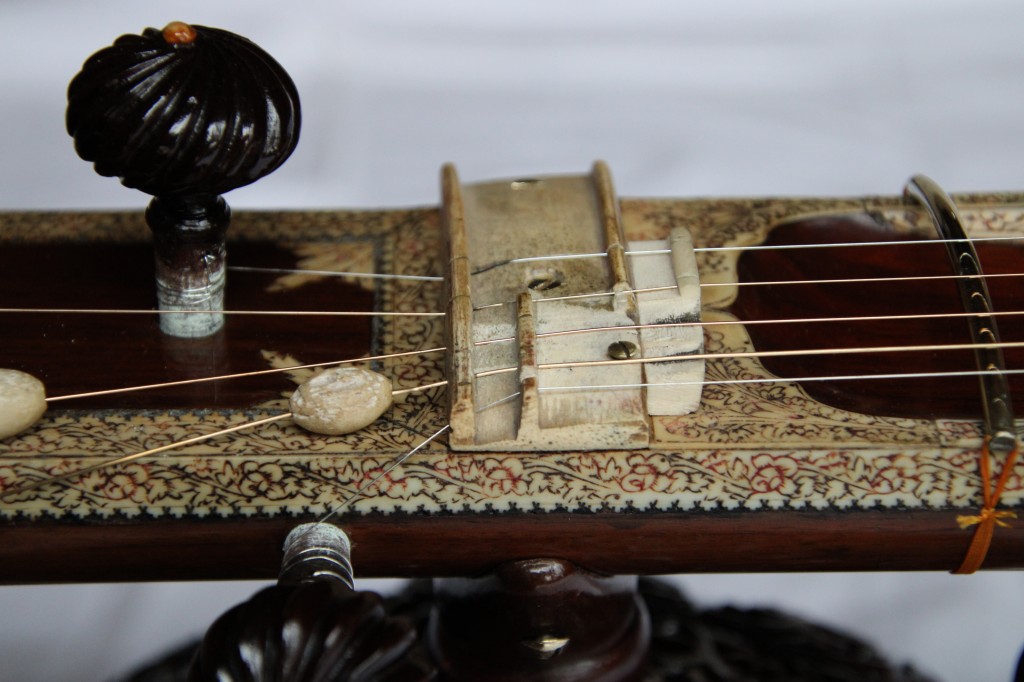 It is widely known that traditionally built sitars do easily suffer from anomalous intonation. This is especially noticeable with the Laraj Kharaj strings. Modern western instruments are often equipped with options to adjust the length of each string separately so that one can achieve quasi-perfect intonation. But that is not easy to achieve on a simple construction like a sitar.
It is widely known that traditionally built sitars do easily suffer from anomalous intonation. This is especially noticeable with the Laraj Kharaj strings. Modern western instruments are often equipped with options to adjust the length of each string separately so that one can achieve quasi-perfect intonation. But that is not easy to achieve on a simple construction like a sitar.
Many sitar maestros started experimenting with an extra bridge added to the bridge at the head of the neck. The construction found on this instrument takes the crown. At first, only the length of the Laraj Kharaj string was adjusted. In principle, that should have sufficed, but apparently it could have been even better. An extra bridge was added later. This time, the Jora string was included in the adjustment.
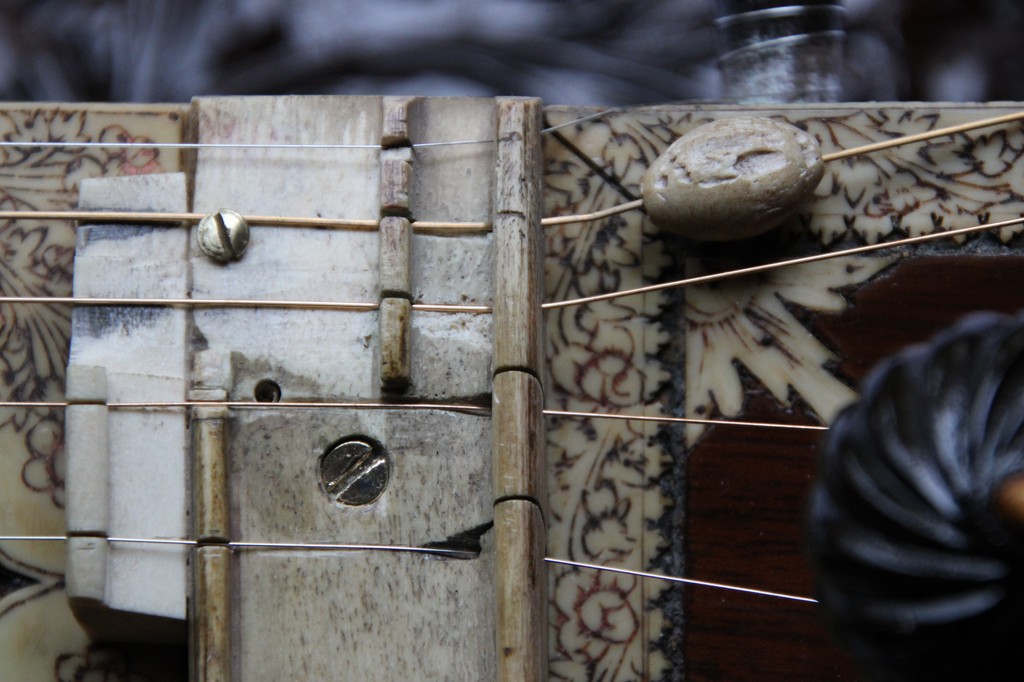
The result is impressive, though. The intonation of this sitar is one of the cleanest I have ever heard. Once the new strings were fitted and the instrument was given a first tuning, it was noticeable that all the strings can be played quasi right on the fret. Very special, especially then with the Laraj Kharaj….
Only drawback Matyas quickly found was that the Kharaj, when played open, easily tended to go into an excessive buzz. This is not surprising given the actual width of this extra bridge on the headstock. The problem was remedied by turning in the accompanying screw a little deeper, though. But whether this will hold up in the longer term Matyas can tell us soon….
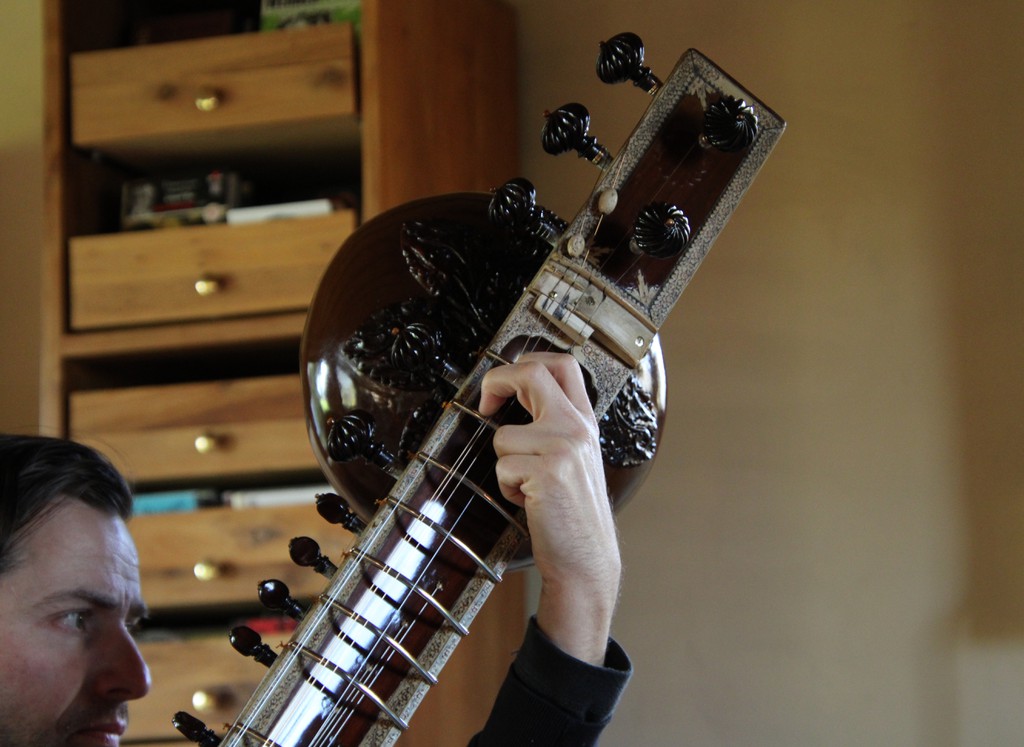 In any case, this sitar is ready for a new start with a promising young sitarist Matyas Wolter. And they lived happily ever after together…. 😉
In any case, this sitar is ready for a new start with a promising young sitarist Matyas Wolter. And they lived happily ever after together…. 😉
Those who would like to hear this sitar in the hands of its master please visit Matyas playlist of Ustad Ilyas Khan’s music on his archival YouTube site:
Ustad ILYAS KHAN: https://www.youtube.com/playlist?list=PLvP9MFDf6jaLLvf-4xvUVTsIEkpm3hOsL
Those who would like to hear this restored sitar in the hands of Matyas himself listen here:
Matyas Wolter: https://www.youtube.com/watch?v=4SA9T4OYYrI

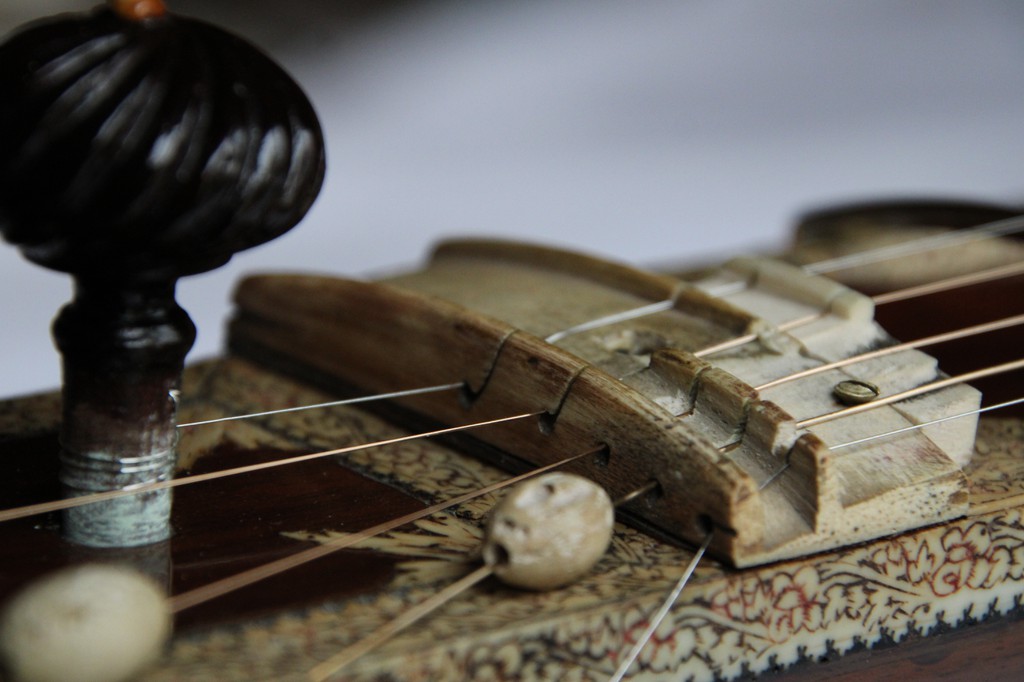
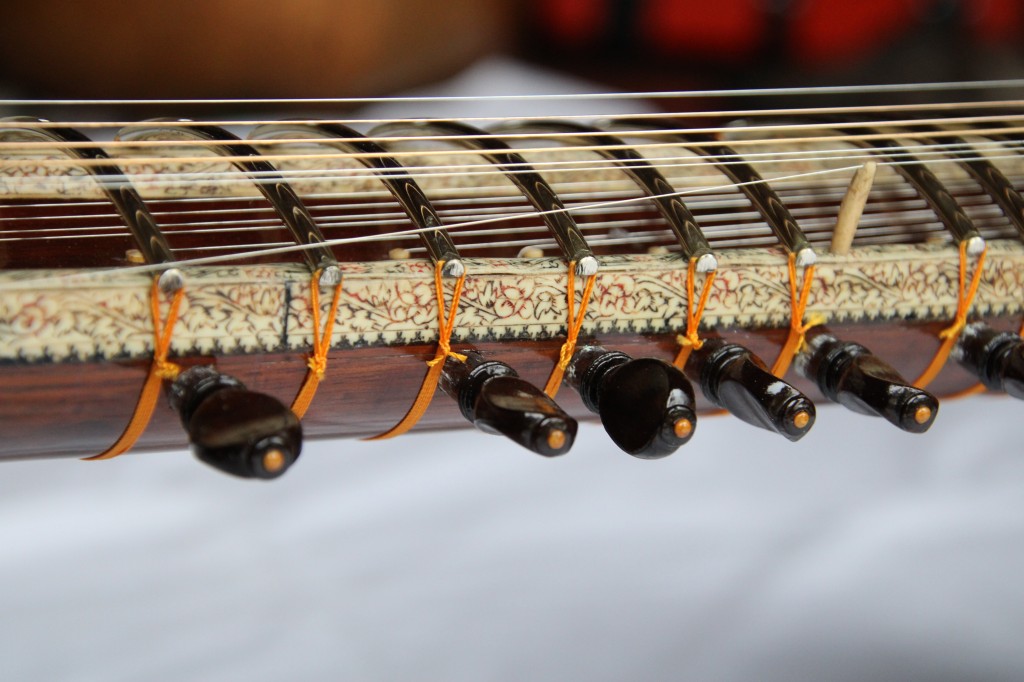

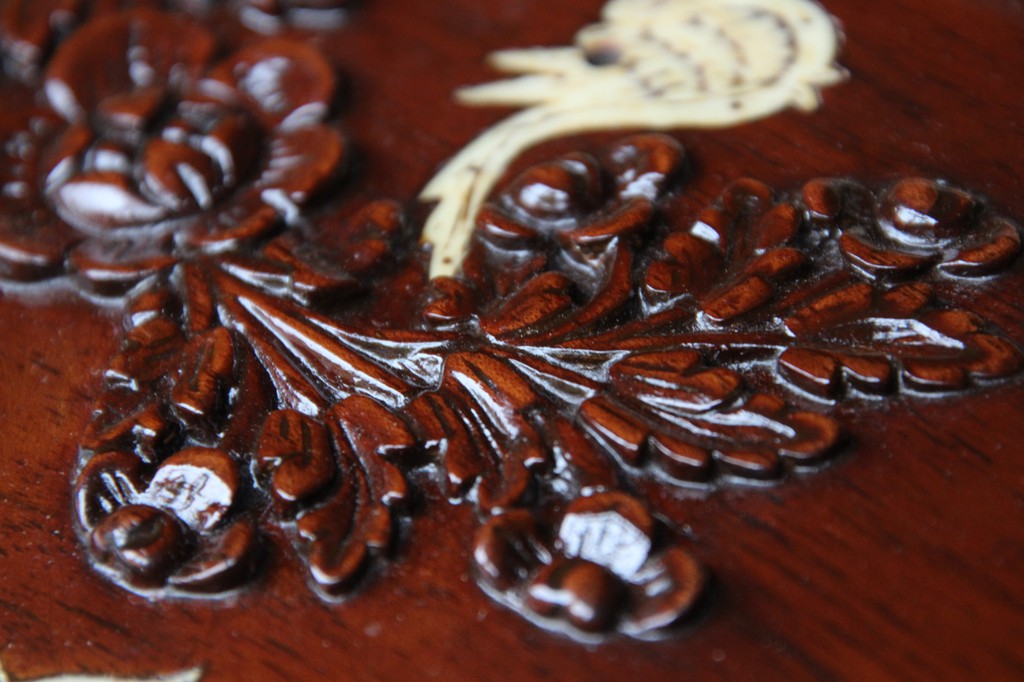
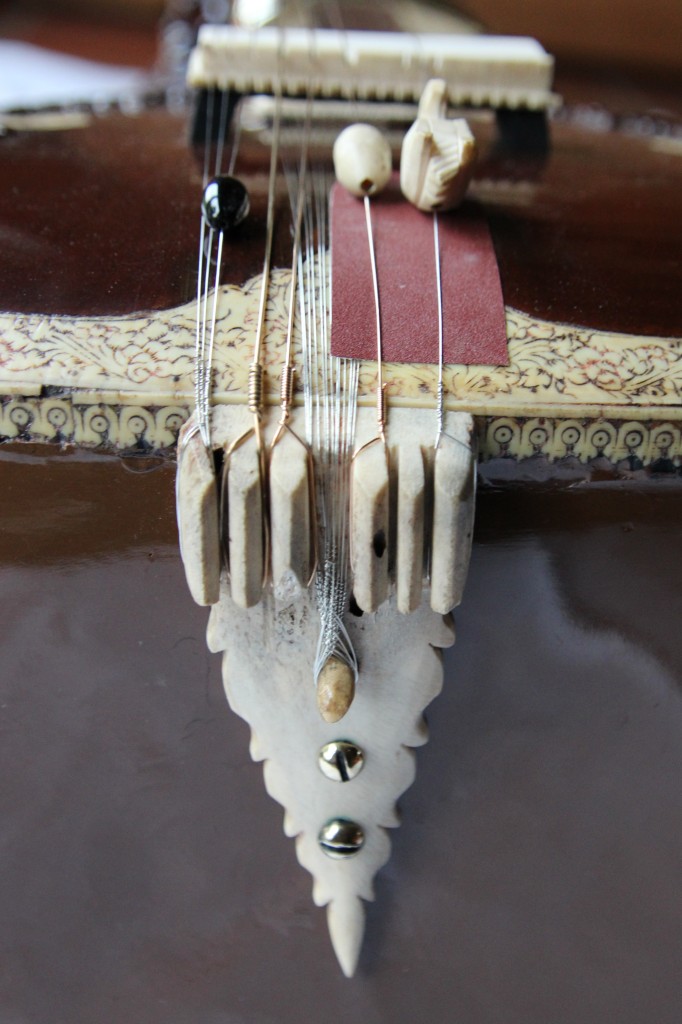
Here is a first recording of the restored instrument: https://youtu.be/aifoI7vyrQ0
So beautiful !!!
Thank you for sharing, Matyas.